© Mark Hertzberg (2021)
Several features of Frank Lloyd Wright’s Thomas P. Hardy House in Racine have been the subject of speculation for years because of the dearth of historic photos. Three newly discovered 1908 photos of the house, which was completed in 1906, end the speculation.
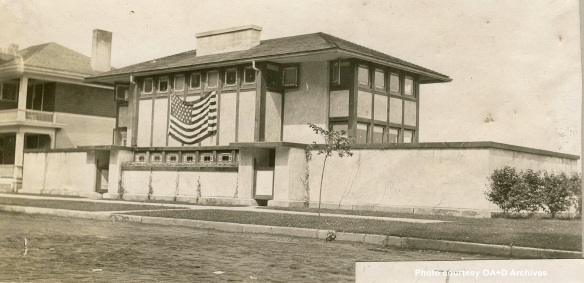 © 2021 The Organic Architecture + Design Archives, Inc.
© 2021 The Organic Architecture + Design Archives, Inc.
We can now definitively answer questions about the two front gates to the house, front plantings, the seven front hall windows, the south first floor bedroom windows (on our right in the photo above), the original dining room windows, and the rear gutter and downspouts.
Many people contributed to our getting the new photos and to understanding them. They are credited at the end of this article.
Until we got the new photos, the only clear vintage photograph of the house we had was this one from the Wright archives, evidently taken as the house was nearing completion in 1906:
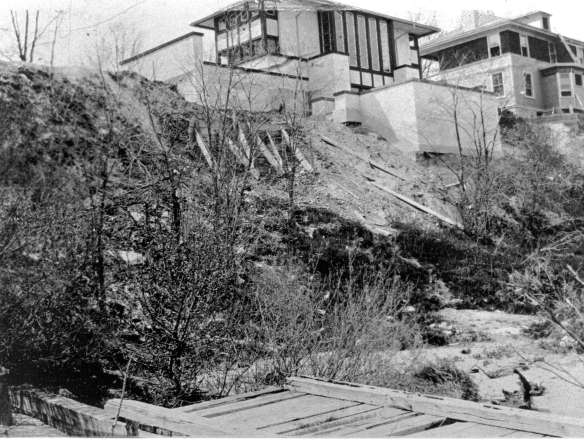 © 2021 Frank Lloyd Wright Foundation, Scottsdale, AZ The Frank Lloyd Wright Foundation Archives (The Museum of Modern Art | Avery Architectural & Fine Arts Library, Columbia University, New York)
© 2021 Frank Lloyd Wright Foundation, Scottsdale, AZ The Frank Lloyd Wright Foundation Archives (The Museum of Modern Art | Avery Architectural & Fine Arts Library, Columbia University, New York)
I was sent this 1906 “real photo postcard” below by Patrick Mahoney in 2018:
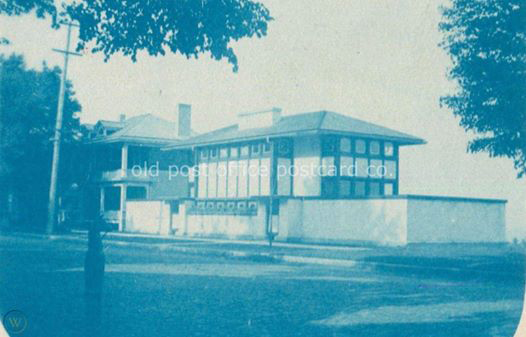
The Gates: This 1906 photograph, taken around the time Hardy moved into his new home, is regrettably not clear enough to let us examine the windows, but we can now affirm that the gates were stucco. Until we got the 1908 photos, Mahoney and I thought we were looking at the stucco walls inside the gates rather than the gates themselves.
By the time that Henry-Russell Hitchcock photographed the house in the late 1930s or early 1940s for his book In the Nature of Materials, there were wood panels on the gates:
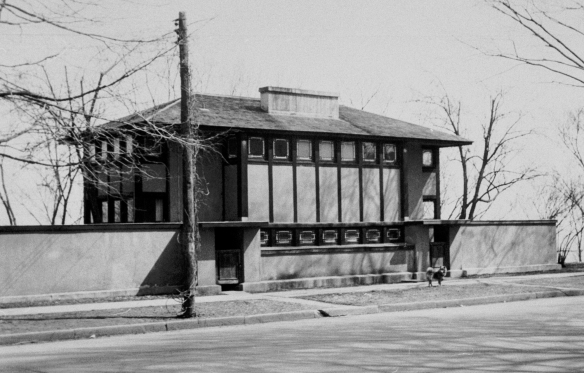
The wood panels are also evident in photos that Anne Sporer Ruetz took in the early 1940s when she was growing up in the house (her parents were Hardy’s second stewards, from 1938 – 1947). You will see her photos further down in this article. The gates seem to have insets on which there could have been stucco panels. Did the stucco panels prove to be too heavy?
The gates were removed by the third stewards of the house (the Archer family, 1947 – 1957). The late Gene Szymczak, who became the seventh steward of the house in 2012 extensively rehabilitated the house, which needed major work. He also commissioned new gates for the house. He elected to use Wright’s first design, gates with diamonds atop the gates:
 © 2021 Frank Lloyd Wright Foundation, Scottsdale, AZ. The Frank Lloyd Wright Foundation Archives (The Museum of Modern Art / Avery Architectural & Fine Arts Library, Columbia University, New York)
© 2021 Frank Lloyd Wright Foundation, Scottsdale, AZ. The Frank Lloyd Wright Foundation Archives (The Museum of Modern Art / Avery Architectural & Fine Arts Library, Columbia University, New York)
Plantings: Marion Mahony’s elevation drawing of the Main Street side of the house shows plantings below the front hall windows. Original to the house, they are long gone, as are the climbing plants:
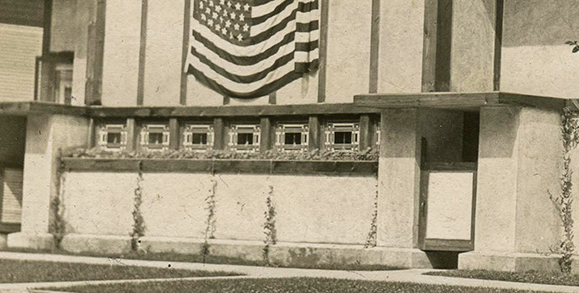 © 2021 The Organic Architecture + Design Archives, Inc.
© 2021 The Organic Architecture + Design Archives, Inc.
Front Hall Windows: There has been speculation about the original design of the seven windows between the two front doors. The 1908 photograph and Anne’s affirm that the windows in the house when Szymczak bought 1319 Main Street in 2012 were original, but they did not conform to the only Wright drawing we have of them. The windows were badly deteriorated, below, and were replaced with new ones by Szymczak:
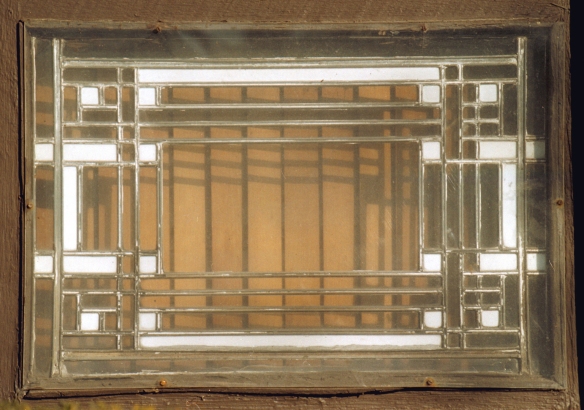
Wright’s drawing, below, is shown in the correct orientation. The text block was positioned as if the drawing is to be viewed as a horizontal sheet, rather than vertical, says my friend Bob Hartmann. At the upper left we see the front hall window design. The five-panel living room windows are at right. Bottom center are the bedroom windows:
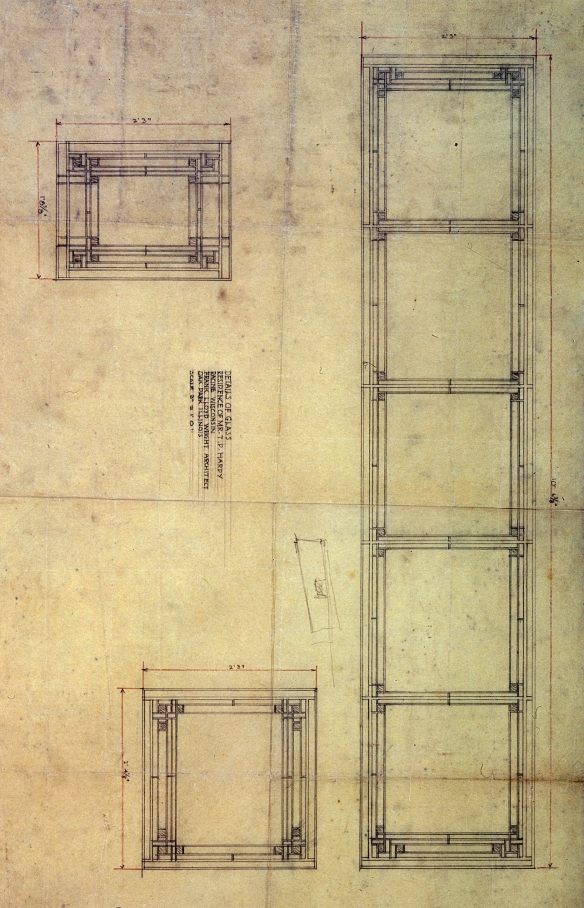 © 2021 Frank Lloyd Wright Foundation, Scottsdale, AZ. The Frank Lloyd Wright Foundation Archives (The Museum of Modern Art / Avery Architectural & Fine Arts Library, Columbia University, New York)
© 2021 Frank Lloyd Wright Foundation, Scottsdale, AZ. The Frank Lloyd Wright Foundation Archives (The Museum of Modern Art / Avery Architectural & Fine Arts Library, Columbia University, New York)
Robert Hartmann, an architectural designer in Racine, has been of invaluable help to me in all my Wright projects, helping me navigate design territory unfamiliar to me. He studied the drawing and photographs closely and observes: “The windows that we see in these photographs appear to be the same windows that were in the house when Gene [Szymczak] bought it. But, they are different than the window design that Wright put on paper. Wright’s design was symmetrical with less elements. His design (on paper) for the hall windows referred to the symmetry and simplicity of the living/dining and upper bedroom windows.
“However, the hall windows that we see in these photos are most likely original to the house. It is not unusual to see a design modification occur during construction.”
Bedroom Windows, Living Room windows: These are the second and third photos from the 1908 collection. You will see the original photos and my enlargements of them. The south bedroom windows are to the left and the two-story living room windows center. Pull down shades are evident on the windows. Anne told me that her parents removed the original living room windows because they leaked badly. They have been clear glass in recent memory. We had a hint of their design from the 1906 construction photo, but now we can clearly see Wright’s original leaded glass living room windows:
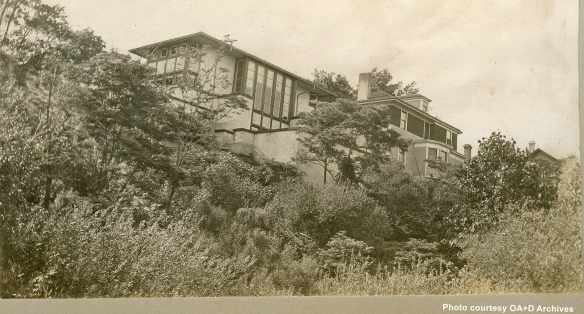 © 2021 The Organic Architecture + Design Archives, Inc.
© 2021 The Organic Architecture + Design Archives, Inc.
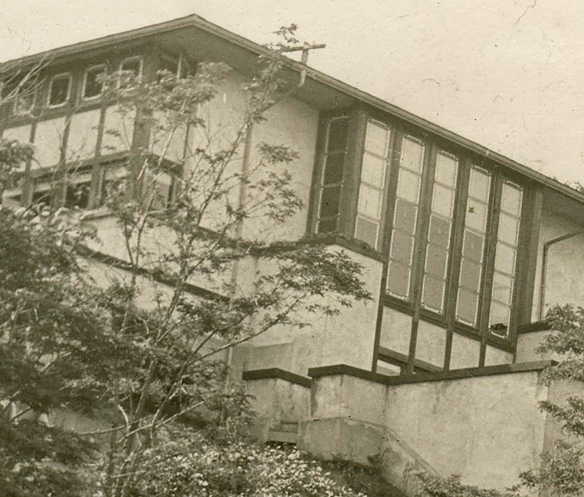 © 2021 The Organic Architecture + Design Archives, Inc.
© 2021 The Organic Architecture + Design Archives, Inc.
Hartmann comments first on the first floor bedroom windows: “It looks like it is just clear glass in the bedroom windows. If it were art glass we would be able to see some traces of the pattern. The key is in the window on the east side that is visible in the photo. Bright light is coming through the window and yet we do not pick up any representation of the art glass pattern. There is a curtain drawn to south side of the window in the foreground. It is pulled back to the window casing and of a medium grey value. If the art glass were present it would stand out in contrast against the curtain. But, the photo is not in perfect focus so there is a percentage of doubt.”
 © 2021 The Organic Architecture + Design Archives, Inc.
© 2021 The Organic Architecture + Design Archives, Inc.
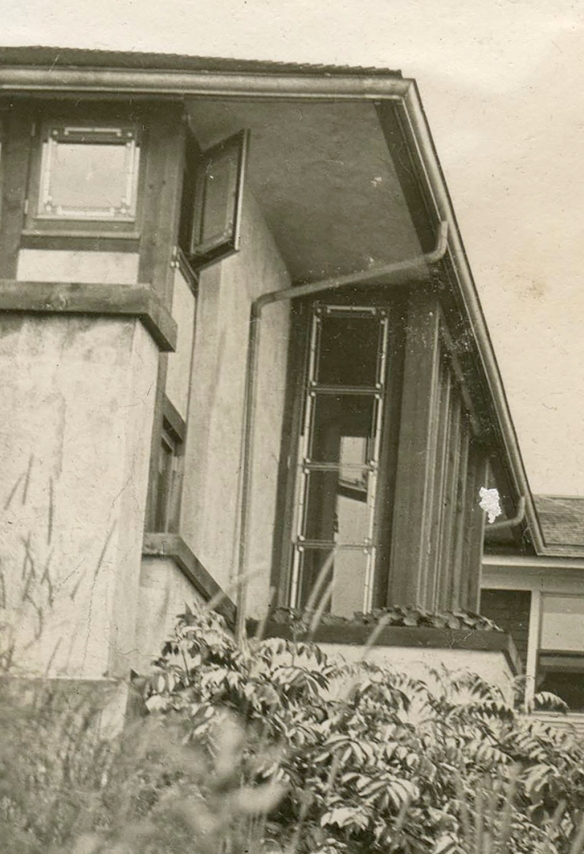 © 2021 The Organic Architecture + Design Archives, Inc.
© 2021 The Organic Architecture + Design Archives, Inc.
Gutter and downspouts: Many people have questioned me about the gutter and downspout on the rear (lake side) of the house. The historic photos show they are original or hew to the original design.
Anne was given a Brownie box camera, likely for Christmas, when she was around 10 years old (the same age I was when I was given my first Kodak Brownie camera!). “Not too many of my friends had a camera but I just thought it fun to take and get the pictures. It would take about a week to get them developed [at Red Cross Drug, 13th and Villa streets], hard to wait.” Her snapshots of her friends show us the windows, the gates, and what may be a coal chute in front of the house (there is no evidence of it anymore).
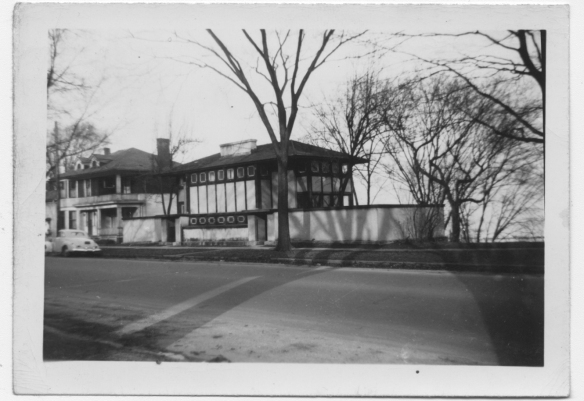
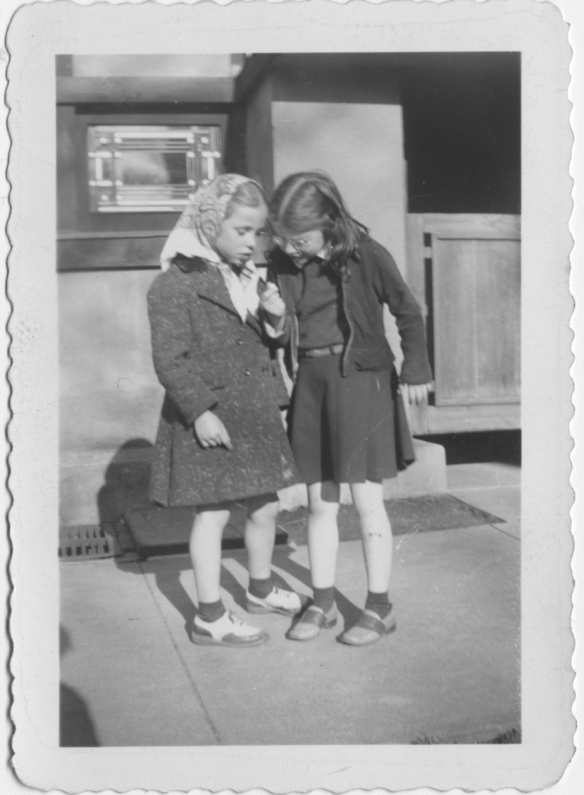
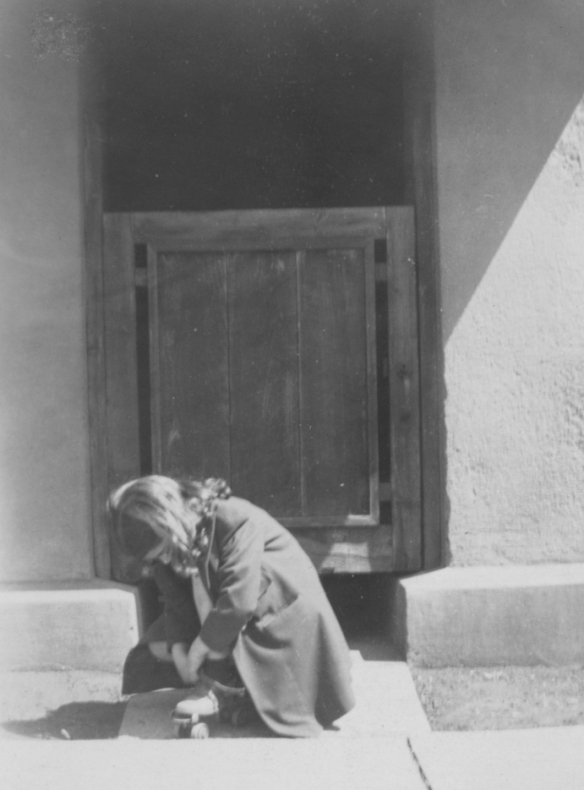

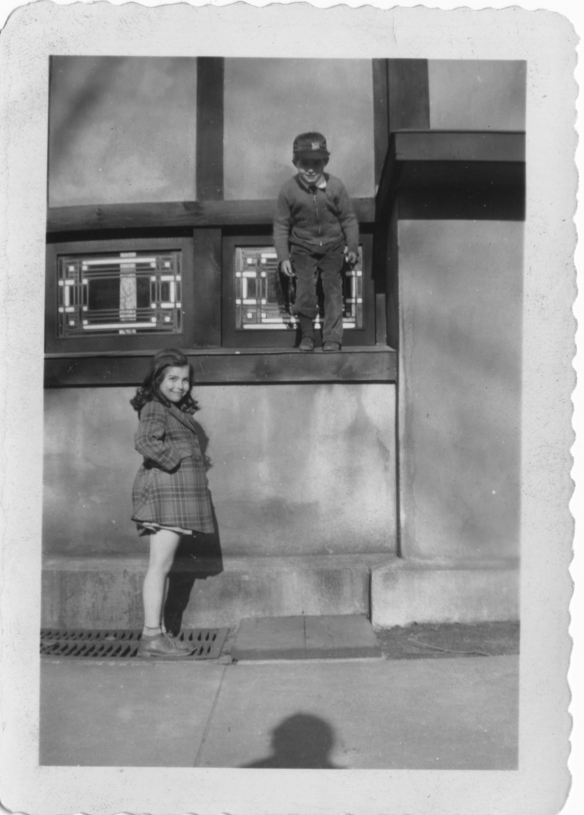
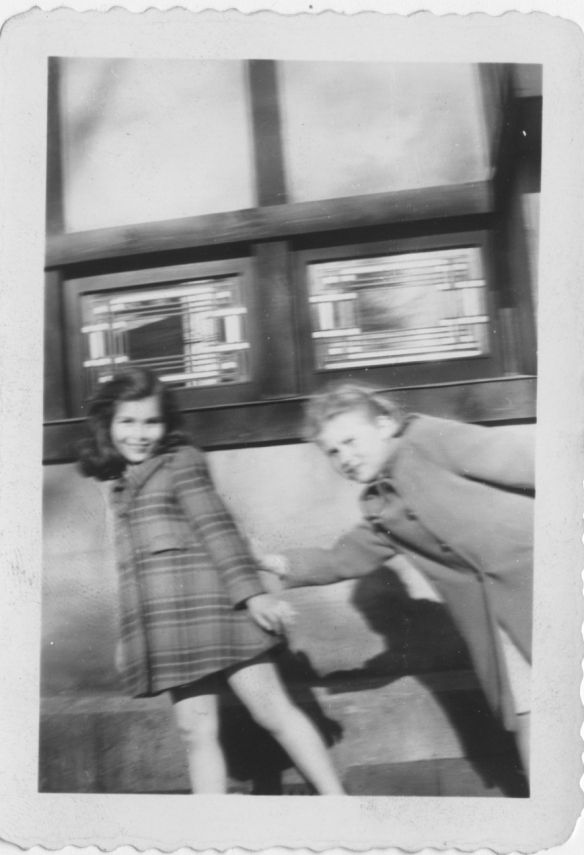
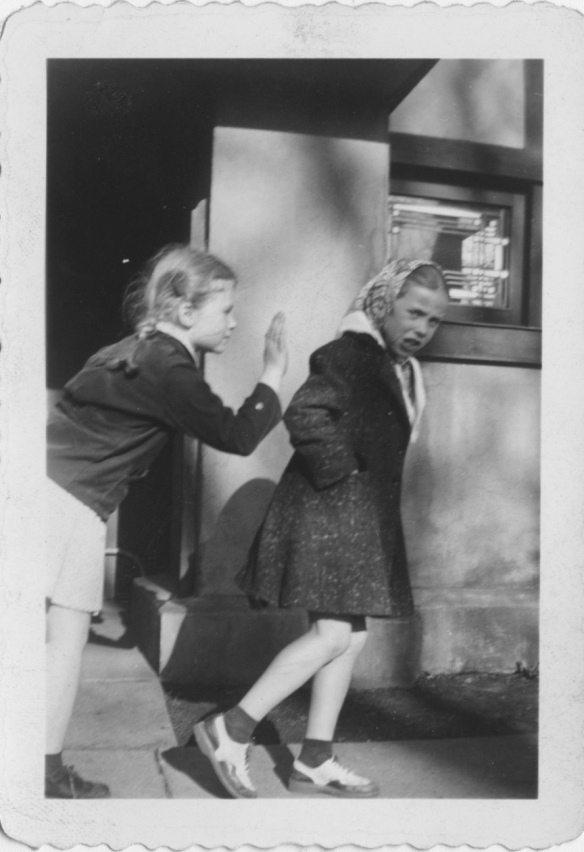 Anne is at left in this photo.
Anne is at left in this photo.
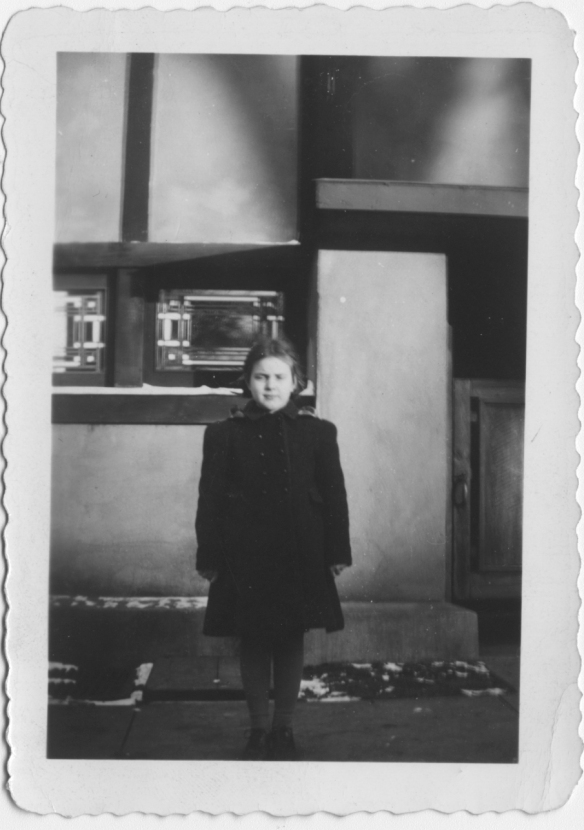
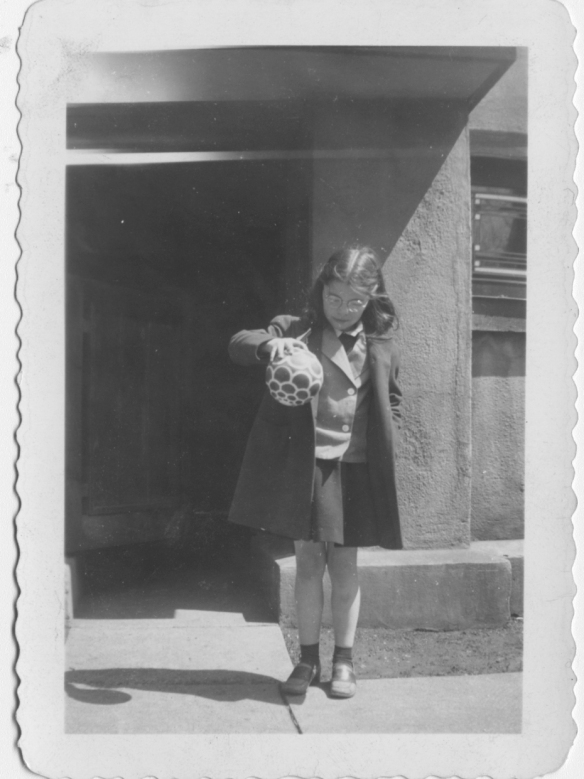
I must credit the people who contributed to our being able to better understand how the house was built:
–Mike Lilek, the force behind Frank Lloyd Wright’s Burnham Block in Milwaukee, alerted me April 16 to a 1908 photo album with photos of the Hardy House and one of the Mitchell House for sale on eBay (Mitchell is grist for a later separate article). He pointed to the 45 or 46-star flag (some of the stars are obscured). The former was in use from 1904 – 1908, the latter from 1908 – 1912. The album is dated 1908.
-Lilek’s email was followed by an alert from Racine historian Gerald Karwowski.
– I notified the stewards of the Hardy House as well as Eric O’Malley of the Organic Architecture and Design Archives (OA+D). OA+D entered the bidding to ensure that the photographs had a safe new repository. They successfully acquired the photos and quickly shared high resolution copies with the Hardy House stewards, with Hartmann, and with me.
I urge you to explore OA+D’s website, and to subscribe to their Journal:
I thank Anne Sporer Ruetz for her friendship and eagerness to share her memories of what she has called her “dream house.”
I also thank architect Patrick Mahoney of Buffalo, another friend and well known Wright Scholar, for the July 1906 “real photo postcard” he sent me in 2018.
– 30 –
